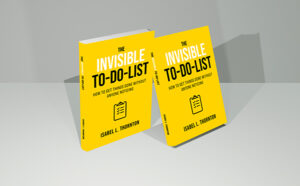
One of the least talked-about effects of autistic burnout is the loss of identity. For many autistic adults, years of masking, constant exhaustion, and external pressures create a disconnect between who they are and who they’ve been forced to appear to be. Burnout can strip away energy for maintaining that mask—leaving people unsure of who they really are.
The good news? Burnout recovery isn’t just about regaining energy—it’s about rediscovering your authentic self. In Embracing Self-Care for Autistic Burnout: Your comprehensive resource for managing autistic burnout, we explore how reclaiming identity is one of the most powerful (and healing) parts of the recovery journey.
Why Burnout Impacts Identity
When you spend years suppressing your needs and pretending to be “normal,” it’s easy to lose track of your real self. Burnout forces a pause, often revealing how much of your identity was shaped by survival rather than authenticity.
This can feel frightening—but it’s also an opportunity. Burnout strips things down so you can begin again, this time from a place of truth.
Signs You’re Experiencing Identity Confusion
- Not knowing what hobbies or activities you truly enjoy
- Feeling detached from emotions or preferences
- Struggling to make decisions without external validation
- Wondering who you are without masking
- Feeling “empty” or like you’re just going through motions
These feelings aren’t failure—they’re symptoms of burnout and years of survival-based living.
Steps to Rediscover Your Identity
- Explore Special Interests Freely
Special interests aren’t just hobbies—they’re windows into who you really are. Allow yourself to spend time in them without guilt. - Reflect on Authentic vs. Masked Behaviors
Keep a journal or tracker: what actions feel like you versus what feels like performance? - Experiment Without Pressure
Try new activities, foods, or routines with curiosity. If you don’t like them, that’s useful information too. - Reconnect with Sensory Preferences
Do you actually like that busy café, or did you push yourself to tolerate it? Explore environments that feel good to your senses. - Seek Validation in Safe Communities
Autistic-led spaces, both online and offline, can provide affirmation and reduce the fear of “being too much.”
Identity as a Core Part of Healing
Rediscovering who you are is not indulgence—it’s recovery. When you live authentically, you conserve energy, prevent burnout, and build resilience.
As one Amazon reviewer of Embracing Self-Care for Autistic Burnout shared:
“This book helped me realize my burnout wasn’t just exhaustion—it was years of hiding myself. I’m finally learning who I am.”
You Are Still You—Even If You’ve Lost Sight of It
Burnout may cloud your identity, but it doesn’t erase it. Through rest, reflection, and gentle exploration, you can rediscover and embrace the self you’ve always been.
For guided exercises, stories, and recovery strategies, explore Embracing Self-Care for Autistic Burnout.
🟢 Start rebuilding your authentic self today
Author

Alan Saunders is recognized for producing books on Artificial Intelligence and digital wellness, where playful narratives and clear insights are featured. Guidance for concerned parents hoping to safeguard children in an ever-evolving digital world is often emphasized in his writing. Complex AI concepts and practical safety measures are presented in a manner that blends intrigue with accessibility, allowing readers to explore technology’s possibilities while maintaining peace of mind.





